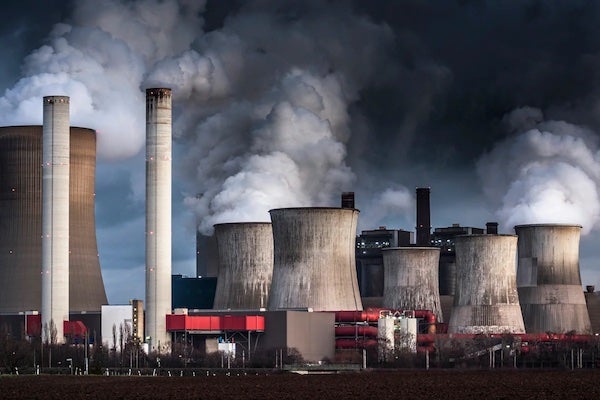Dec. 15, 2023
Government ministers from nearly 200 countries meeting at the United Nations Climate Change Conference (COP28) in Dubai, United Arab Emirates, reached a global agreement Wednesday that calls for a transition away from fossil fuels, the chief cause of climate change.
The unprecedented agreement did not go as far as calling for a complete phaseout of fossil fuels, such as oil, gas and coal, but the deal was called the “beginning of the end” of the fossil fuels era.
The agreement calls for nations to accelerate a global shift from fossil fuels this decade and end carbon dioxide emissions by 2050. The deal also calls on nations to triple their dependency on use of renewable energies such as wind and solar power by 2030 and slash methane emissions.
We asked Jaime Palter, an associate professor at GSO, to tell us what the agreement means and how it can help curb the dependence on fossil fuels, which are dangerously warming the planet. Palter studies ocean circulation and how it influences life and chemistry in the ocean, including changes due to warming.

The agreement is being heralded as a big step forward, but what did the diplomats in Dubai actually agree on? How does the agreement help move the world forward and did it go far enough to make a real difference?
The Paris Climate Accord in 2015 set the goal: keep global average temperature increase to well below 2 degrees Celsius (3.6 degrees Fahrenheit) above preindustrial levels. Each subsequent Conference of the Parties since then has been about how the more than 195 signatories can implement changes that actually achieve this goal. Each country sets its own contribution to reduce emissions. In Dubai, all countries reaffirmed their goals and ratcheted up the pledged actions aimed at reducing the harms of climate change.
Previous climate agreements have failed to bring about change. What is the hope that this agreement will be different?
I disagree entirely with the presumption of failure! Before the Paris Climate Accord was signed, the world was on track for over 7.2°F of warming by the end of the century. Implementation of the policies already pledged by each of the Paris signatories would reduce warming to under 5.4°F this century. This may sound like a small difference, but all of the damages we experience as a result of warming worsen with each fraction of a degree global average temperature change.
Consider that 2023 is about 1.8°F warmer than preindustrial levels and we’re already experiencing heat waves, droughts, wildfires, sea level rise, and intensified cyclones. These repercussions should make everyone motivated to limit warming as much as possible. Of course, we need to work harder, faster, and smarter to cut greenhouse gases emissions. The document signed in Dubai only matters if it hastens this work.
Obviously, many economies are dependent on fossil fuels. What are some of the hurdles worldwide to implementing this agreement? Is it realistic to think the world can transition away from fossil fuels in time to make a difference?
There are “low hanging fruit” that we can pursue right now that could make a huge dent in the global warming problem while simultaneously improving human health via reduced air pollution, saving people money, and creating lots of jobs.
Mostly, these easier gains are in the production of electricity and in transportation. The cheapest source of new energy is solar, and that’s without even penalizing fossil fuels for their immense societal costs due to asthma, cardio-vascular disease, or climate-change exacerbated extreme weather disasters (which collectively make a transition to renewable energy a very good bargain, indeed). If we deployed everything that is essentially shovel-ready today, we’d buy ourselves the time to tackle the harder parts of the problem in the 2030s and beyond.
It’s absolutely realistic to think we can make a difference, keeping in mind that every 10th of a degree matters. Think of it this way: If your car were careening toward a tractor trailer, you’d pump the breaks as long and as hard as you could—slowing down still helps prevent the worst impact, even if it doesn’t stop the crash entirely.
Scientists have called for a reduction in greenhouse gases by 43% in this decade to limit global warming to 1.5°C (2.7°F), compared with preindustrial levels, to stabilize global temperature. Are those hard and fast numbers? Is there a better way to gauge global warming?
Nothing magical (or, rather, magically tragic) happens at 1.5°C or 2°C. Damages accumulate all along the warming pathway. Imagine the worst heat wave of the previous summer. At 1.5°C of warming, those uncomfortable temperatures might become your average month of July. At 2°C, it might be the whole summer. At 1.8°C, it’s somewhere in between.
The 43% number you cite is an estimate of what it would take to be on the right track to limit warming to 1.5°C. Naturally, there is some uncertainty associated with that number (perhaps it’s better reported as something like 40-50%), but it’s based on a lot of science and it is a worthy goal. But let’s say we “only” reduce by 25% or 35% by 2030, it just means we keep working collectively to get on a trajectory that avoids the most harm.
Currently, what are the major effects we’re seeing from climate change? And what can we expect going forward if changes are not made quick enough?
So many weather disruptions people see on the news (or in their backyards) are exacerbated by global warming: heat waves, droughts, wildfires, sea level rise, and intensified cyclones, just to name a few. The effects of climate change are all around us and will only intensify without our action. We don’t have time to despair—only time to get to work.

